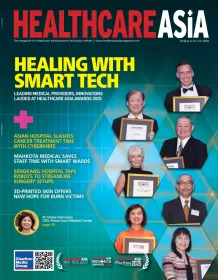The chatbot will see you now – virtual HCP engagement in the Asia Pacific
There is little doubt that the Asia Pacific region represents a key growth ambition for the majority of Life Sciences companies. Statistics around unmet healthcare needs are well-known and, as the saying “necessity is the mother of innovation” goes to show, the Asia Pacific has an opportunity to leapfrog the West when it comes to novel therapies and approaches to market access. But at the same time, cost control and compliance remain sizeable challenges.
Enter virtual engagement with Healthcare Professionals (HCPs), who are still considered to be one of the main stakeholders in the approval, recommendation, use, and pricing of medicines and medical devices. Just as the days of the product blockbuster are fading, so too are mass ground-game salesforces. Patient populations are becoming more niche, doctors’ time more limited, and availability of digital technologies more prevalent.
Terms such as “digital labor” and “intelligent automation” have become fairly commonplace, and are arguably more practically applied to back office functions such as finance, procurement, and IT where routine tasks and the ROI justification can be made. This is confirmed by KPMG research which revealed that currently, Life Sciences companies are 50% more focused on improving process efficiency than enhancing the customer experience.
This is the exact opposite of cross-industry averages. However, looking at the future, the paradigm appears to change as the large majority of Life Sciences leaders expect “digital transformation” to deliver returns in three years or less; and have the highest expectations for improving the customer experience, a topic for which Life Sciences leaders are statistically less confident than their peers in other industries.
The challenges that come along with digitally transforming customer interactions are confirmed by KPMG research indicating that only 15% of Life Sciences companies feel they are effective in using digital tools to enhance the customer experience, with desired capabilities in areas such as personalisation, profitability measurements, omnichannel engagement, and overall actionable insights.
At the same time, there is a concern about funding as more than 50% of Life Sciences companies expect their IT budget to decrease or, at best, to stay neutral in the near future. These constraints make the case for the use of partnerships, teaming up with external specialists to explore digital opportunities instead of engaging in the costly process of building up the development capacity in-house.
The remainder of this article explores a Life Sciences company positioning itself as a digital leader to design, build and implement an HCP chatbot in the salesforce, as well as our experience and the lessons learned therein.
Increasing engagement with HCPs
HCPs are critical for the pre-launch and ongoing recommendation activities as they introduce patients to suitable medical products; thus having the right information on-hand quickly is key. Sales reps or physical literature are the traditional means to provide such information, but this approach has its own challenges:
- Speed – HCPs waiting on answers about products is not ideal by any standard
- Sales reps are spending non value-added time on admin-heavy matters
- Systematically collecting these data points for future product launches is not feasible
The result was the production of a digital assistant on a mobile phone. The chatbot is aimed to support the communication between the HCP and sales representatives of the Life Sciences company. “Various uses of chatbots meant for HCP interactions are for imparting information onward,” noted Dr. Suchitra Kataria, Medical Doctor and ex-Life Sciences industry executive. “It could be company-sponsored education, patient support programs, therapy side effects, medical query handling, adverse event reporting, trial updates, issue redressal, etc.”
What can be learned?
Ultimately, these projects are less about the technology and more about the people element. Existing salesforces might be hesitant because a chatbot will take over some of their job responsibilities. Doctors who still prefer the face-to-face interactions may feel uncomfortable dealing with a robot. And compliance professionals will stress about how the interactions may be perceived by regulators, or even the risk of chatbots providing misinformation. It’s a long journey and we are still in the experimentation phase. The point is to ensure all parties are part of the conversation.
Thus the business case was born for a Life Sciences company with an Asia Pacific presence to embark on a new digital technique. Taking advantage of an upcoming product launch, the Life Sciences company sought a Minimum Viable Product (MVP) for a mobile platform that connects HCPs with the company’s teams and product information.
In collaboration with KPMG, three overarching activities were undertaken:
- Frame the problem with design thinking – map the stakeholder journey (external and internal), particular to the HCP experience
- Crack the solution with a hackathon – bring in external digital innovation expertise by inviting startups to pitch their ideas, with a diverse review panel
- Focus on addressing point 1 – bring the right expertise, be flexible along the way, and don’t rush the process
Following design thinking principles was a key differentiator for the project. The benefits include increased collaboration, cutting down on defects, faster time to go-to-market (usually by at least 50%), and increased success rate (usually by a ratio of 2:1). In the spirit of design thinking for the Life Sciences industry and as was the case of this MVP, involving HCPs in the process helped to:
- Deliver user journey perspectives and a safe place for the HCPs to interact directly with the Life Sciences company
- Leverage on external ideas and expertise to address the problem statement via a hackathon approach
- Prioritise a long list of suggestions into the ones that were most likely to succeed in the healthcare context
The project now is looking to scale across geographies (including beyond APAC) and to more than 20 different therapeutic areas. According to the KPMG research, over half of Life Sciences companies target such educational platforms as a digital use case, though less than one-third have achieved this ambition.
In fact, 85% of companies claim they are expecting (i.e. waiting) for “digital transformation” to be driven by the tech industry rather than from within incumbent Life Sciences players.
We expect digital labor initiatives, such as chatbots, to continue to grow not only for back office functions but also the front office (and the interconnectedness therein). The time is now to explore and develop the management techniques and skillsets that will accommodate such uses of advanced technologies.



















 Advertise
Advertise







